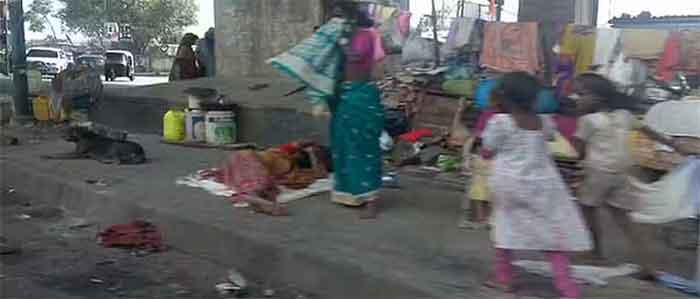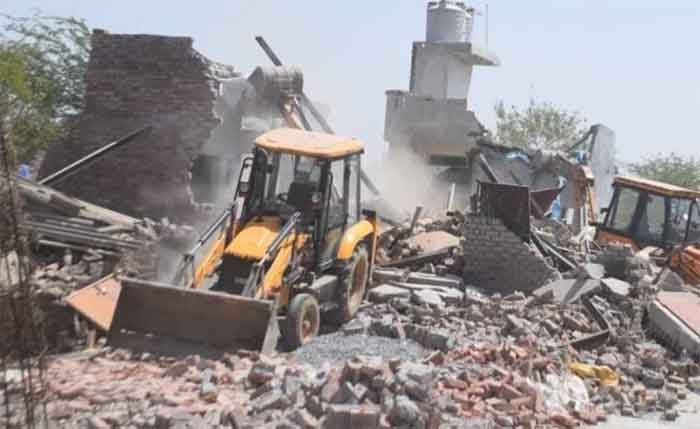
Those who are in-charge of implementing the PM-Awas scheme of rural housing can rightly take pride in what has been achieved in Dafai hamlet (Karvi block, Chitrakut district, Uttar Pradesh). All the Kol tribal families here are extremely poor and vulnerable. In a rare achievement, almost all of them have received housing assistance under PM Awas. What is more, corruption and payment of commissions has been avoided in this particular village, although it is a common practice elsewhere. In the case of most of the households here, almost all of the house construction (leaving aside plastering) has been completed. If several of them have not yet moved in, it is because an auspicious worship considered important in their culture is still awaited. They too will move in soon.
However even at the peak of this success a few very troubling questions have been left behind. Even without plastering and whitewashing and some finishing touches the government funds were not adequate for the house and as these are really very poor people with no savings and with precarious livelihoods, they had no option but to borrow the remaining money at a high rate of interest from private moneylenders. The result is that they have the new house but have to return a high sum on a weekly basis which may be very difficult to pay particularly during the lean season of livelihood opportunities. The lenders have stated clearly that they have to return the loan installments in time no matter what the compulsions of borrowers are.
Villagers gave this breakdown of the minimal expenditure for the two room house constructed under this scheme (in Rs.)—
- 7000 bricks —Rs. 42,000
- 6 quintal iron bars—36,000
- Two trolley stones (gitti)—6000
- 70 sacks of cement—22,000
- Five trolleys of sand—15,000
- Doors etc.—10,000
- Mason –12,000
- Plastering—25,000
- Whitewashing, misc, labour other than mason, interest payment in the course of house construction as government funds are released in instalments, money spent when overcharged etc. If toilets and washrooms are to be constructed, these too need funds. There are no toilets in this village yet.
Keeping in view all these aspects and inflation, what these villagers need is about Rs. 2 lakh for a housing unit, and not Rs. 1.20 lakh in three instalments (each instalment paid after certain work has been completed).
In this particular village bribes have not been given or taken in the housing scheme, the villagers said. However elsewhere when bribes are common, the situation becomes even more difficult for the really poor households selected under this scheme.
Another question relates to the unskilled work done by the beneficiary household members. They are supposed to be paid for this and have been told the likely sum is Rs. 18,000 or so but they have not received this yet. The scheme of Rs. 12,000 for toilet construction has also not reached this village yet, and regarding this it is often stated that this amount should be increased keeping in view real expenses needed for proper construction in inflationary times.
In Dafai in some cases old kutcha houses were demolished when new ones were constructed, but in some cases these were not. I saw a new house which has been beautifully integrated with the old dwelling. This family has constructed the new house in such a way that both can be used together and are almost attached to each other with a little open space in between. As the lady who gracefully showed me around her home said happily—in the winter and rain I like to live in the new pucca house but in the hot weather which exists during most of the year actually I still like to live in the old mud dwelling. This is also a reminder of how the old kutcha house also has its uses, all the more so in times of climate change, so the best situation in many villages may be for beneficiaries of this scheme to retain both the new and the old house.
However the new loans are truly troubling. One lady told me that her family has to pay Rs. 840 per week for the next two years, while another lady said that she has to pay back Rs. 1200 per week. They both said that the private moneylenders have stated very clearly that they are going to be very strict in taking back their loans in time.
Hence there is a strong case for raising these payments and for ensuring early payment of the wages due for the household’s contributed labour. It will be helpful also to ensure that toilets and washrooms are provided wherever these do not exist.
Bharat Dogra is Honorary Convener, Campaign to Save the Earth Now. His recent books include Protecting Earth for Children, Man over Machine and India’s Quest for Sustainable Farming and Healthy Food.















































